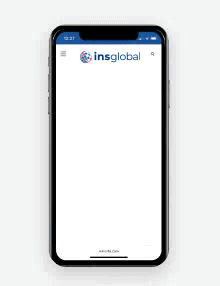Generational diversity in the workplace, meaning multiple age groups working side by side, is today finally being recognized for the potential benefits and challenges it brings, with more serious effort being put to properly utilize generational differences than ever before. Each generation brings unique experiences, perspectives, and work styles, which can either enrich the workplace or lead to misunderstandings. However, effectively bridging generational gaps requires organizations to foster an environment of inclusion, adaptability, and mutual respect.
Leaders must implement communication strategies, flexible policies, and training programs that cater to diverse needs while maintaining a cohesive work culture. So, to achieve harmonious cross-generational collaboration, companies must understand the core differences between Baby Boomers, Gen X, Millennials, and Gen Z in the context of the workplace. Then, by embracing these differences rather than resisting them, businesses can harness the strengths of each generation to drive innovation and productivity.

Tired of scrolling? Download a PDF version for easier offline reading and sharing with coworkers
Understanding Generational Differences
Defining Generational Cohorts (Baby Boomers, Gen X, Millennials, Gen Z) as Workers
Each generation is shaped by distinct historical, social, and technological events that influence their work styles, values, and communication preferences. While the exact dates and characteristics that define each generation may remain controversial, the generations currently most active in the workplace are:
- Baby Boomers (born 1946-1964) are often characterized by their strong work ethic, loyalty to employers, and preference for traditional hierarchies
- Gen X (born 1965-1980) values independence, work-life balance, and pragmatic leadership.
- Millennials (born 1981-1996) prioritize collaboration, meaningful work, and flexible work arrangements.
- Gen Z (born 1997-2012) is the most digitally native generation, preferring instant communication, diversity, and entrepreneurial mindsets.
Understanding these generational traits can help organizations design policies and workplace cultures that cater to varied expectations, as well as make the best use of individual workers. Acknowledging these differences also enables leaders to bridge communication gaps, resolve conflicts, and maximize productivity.
How Generational Differences Affect Work Culture
In 2025, Millennials now make up the majority of the workforce internationally. This is expected to continue until Gen Z takes that spot in 2035. However, today, just as at any time, the majority of teams will be made up of a variety of generations.
Multigenerational workforces foster a rich blend of perspectives, skills, and experiences, but also present challenges in terms of collaboration, communication, and workplace expectations.
Baby Boomers may prefer structured environments with in-person meetings, while Millennials and Gen Z thrive in digital and flexible workspaces, and such differences will affect every part of the work cycle of an employee from hiring to termination. In fact, many companies today are struggling more and more to hire for this reason in what is being labelled “the Great Attrition” or a shift in hiring practices as a result of changing generational expectations, according to McKinsey.
Different expectations surrounding work-life balance, feedback preferences, and decision-making can create friction or increase turnover, but organizations that recognize and accommodate these differences can build a more cohesive and innovative workforce.
Emphasizing cross-generational communication and inclusive policies ensures that employees from all age groups feel valued and engaged.
The Challenges of Generational Diversity
While the successful integration of different generations can bring benefits, a lack of diversity or poorly managed integration can bring serious problems. In 2025, age discrimination lawsuits are on the rise, particularly when involving real or perceived discrimination against older workers, meaning companies must consider the potential for issues as a result.
Communication Styles and Preferences
Cross-generational communication is one of the biggest challenges in a diverse workplace as it is most often cited as the cause of active disagreement. While Baby Boomers may prefer formal emails or face-to-face conversations, Millennials and Gen Z lean towards instant messaging and collaborative platforms, with the two approaches rarely pleasing everyone.
To avoid the appearance of preference, organizations should adopt multi-channel communication strategies that accommodate various preferences while providing clear guidelines on best practices, ensuring that all employees feel comfortable engaging in discussions in their own way.
Encouraging active listening and open dialogue also fosters stronger relationships among team members and helps eliminate generational barriers.
Differing Attitudes Towards Work-Life Balance
Work-life balance expectations differ significantly across generations. For example, while Baby Boomers and Gen X may associate career success with long hours and job stability, Millennials and Gen Z prioritize flexibility and well-being. These contrasting perspectives can lead to workplace tension when expectations are misaligned or when one standard is seen to be prioritized over another.
Employers should offer customizable work arrangements that cater to individual preferences without compromising productivity. This may involve implementing voluntary remote work policies or flexible schedules, and promoting mental health initiatives ensures that all employees can achieve a balance that suits their lifestyle.
Varying Levels of Technological Comfort
While hiring Gen Z and Millennials offers access to digital natives who seamlessly adapt to new technology, Baby Boomers and some Gen X employees may require additional training to stay current, reflecting the varying levels of technological integration seen across generations.
While technological adoption is generally on the rise already, companies can still implement continuous technology training programs to ensure that all employees can leverage digital tools effectively at their own pace. Encouraging intergenerational mentorship allows younger employees to support senior colleagues in adopting technology (called “reverse mentoring”), fostering a culture of shared learning and collaboration.
Different Career Expectations and Goals
Career aspirations and professional development expectations differ across generations, such as how Baby Boomers and Gen X often seek long-term job security and promotions within a company, while Millennials and Gen Z are more likely to prioritize personal growth, job mobility, and a sense of purpose in their work.
To engage each group, employers should create career development programs that cater to diverse aspirations, offering mentorship, skill-building opportunities, and internal mobility to keep employees engaged and motivated.
Bridging the Gap: Effective Communication Strategies
Being able to effectively bridge the generational gap between workers can not only bring massive potential in terms of skills, but it may also be an expected legal requirement due to concerns around the isolation of older members of the workforce. However, this means using communication strategies that best integrate team members of different generations into a team dialogue.
Active Listening Across Generations
Encouraging active listening in the workplace helps bridge generational divides. Employees should be trained to listen without bias, ask clarifying questions, and respect differing viewpoints as this practice builds trust and reduces misunderstandings.
Adjusting Communication Methods to Suit Different Preferences
Organizations must adapt their communication methods to meet diverse generational needs, whether that means offering a mix of emails, video calls, instant messaging, and in-person meetings, to ensure that everyone can engage comfortably.
It must fall to leaders to set clear guidelines for communication in this case, as being seen to provide effective workplace communication helps eliminate bias and improves overall team efficiency.
Promoting Empathy and Understanding Between Generations
Encouraging empathy and mutual respect is essential for bridging generational gaps. Employers should facilitate workshops, team-building activities, and mentorship programs that allow employees to learn from one another’s experiences.
When employees understand the motivations and perspectives of their colleagues, they are more likely to collaborate effectively. Because of this, promoting a culture of inclusivity ensures that all team members feel valued, regardless of their age or background.
Building a Collaborative Work Environment
Encouraging Mentorship and Reverse Mentorship Programs
Mentorship programs play a crucial role in fostering cross-generational knowledge exchange, with mentorships today playing new and interesting roles in promoting generationally-integrated teams.
Traditional mentorship allows experienced employees to guide younger colleagues, while reverse mentorship enables younger employees to share insights on emerging technologies and modern work practices. This can be useful when strengthening workplace relationships and promoting continuous learning opportunities, as well as offering positions of responsibility regardless of age.
Leveraging the Strengths of Different Generations
Each generation can bring unique strengths to the workplace, like how Baby Boomers can offer experience and stability, Gen X may excel in problem-solving and leadership, Millennials often contribute creativity and adaptability, and Gen Z is known to drive digital transformation.
Organizations that recognize and leverage these strengths can create a more dynamic and productive workforce.
Promoting Cross-Generational Teamwork
Encouraging collaborative projects that bring together employees from different generations enhances team cohesion and knowledge sharing. Assigning diverse teams to problem-solving initiatives fosters creativity and helps break down age-related stereotypes, leading to better innovation and workplace harmony.
Managing Expectations and Work Styles
Balancing Independence with Collaboration
Different generations have varying preferences for independent work versus teamwork, which is a particularly problematic disagreement when working on a project or as an integral part of a growth strategy.
While Baby Boomers and Gen X may be more accustomed to working independently, Millennials and Gen Z thrive in collaborative environments. To accommodate these differences, organizations should try to promote flexibility by ensuring that employees can work both autonomously and in teams depending on the nature of the task.
Adapting Leadership Styles for Different Generations
Effective leaders must adapt their leadership approach based on generational preferences. For example, Baby Boomers may appreciate direct leadership and structured guidance, but Millennials and Gen Z are more likely to value a coaching-oriented leadership style that emphasizes growth and development. The right leadership approach will be one that fosters engagement and productivity across all age groups.
Understanding and Managing Different Motivations
Each generation has different career motivations and incentives, so while Baby Boomers may prioritize job security, Gen X typically seeks work-life balance, Millennials value meaningful work and purpose, and Gen Z thrives on continuous learning.
Employers who want to benefit from the engagement of each will tailor motivational strategies to align with these diverse aspirations and drive higher job satisfaction and retention.
Embracing Technology and Training
Not all employees are equally comfortable with rapid technological advancements. Organizations should implement technology training programs to ensure that all employees, regardless of age, can effectively utilize digital tools. Training should be customized based on learning preferences to maximize engagement and effectiveness.
Encouraging Innovation and Digital Fluency
Promoting a culture of digital fluency ensures that employees from all generations embrace technological advancements. Encouraging continuous learning, participation in tech-focused workshops, and knowledge-sharing sessions helps employees stay competitive in a digital workplace.
Fostering Digital Inclusion in the Workplace
Digital inclusion means ensuring that all employees, regardless of their generation, have access to essential digital tools and the knowledge of how to use it to the fullest potential. Employers should provide user-friendly platforms, assistive technologies, and continuous training to close any digital skill gaps, taking extra care to boost the skills of those who may be struggling.
Creating an Inclusive and Respectful Workplace Culture
Encouraging Open Dialogue About Generational Differences
While avoiding the issue or attempting to integrate generations as usual, creating an open and inclusive culture can encourage constructive conversations about generational differences. Regular roundtable discussions, surveys, and feedback sessions that avoid bias or discrimination can help employees voice their perspectives and foster mutual understanding.
Celebrating Diversity in Generational Perspectives
Recognizing and celebrating diverse perspectives enhances employee engagement and collaboration.
Cross-generational appreciation initiatives, such as team-building activities and knowledge-sharing programs, help to strengthen intergenerational respect and commemorate individual input.
Developing Policies That Promote Inclusivity
Organizations must develop inclusive, long-term-oriented workplace policies that cater to employees of all generations. The best policies should address flexibility, equal opportunities for career growth, and fair compensation structures, ensuring that all employees feel valued and respected.
Flexibility in Workplace Policies
Offering Flexible Work Arrangements
While not for everyone, flexible work arrangements can help to accommodate the diverse needs of a multigenerational workforce. Remote work options, hybrid schedules, and alternative working hours enable those employees who wish to take advantage of them to achieve a better work-life balance while maintaining productivity. However, it’s important not to push every employee into such an arrangement that may not appreciate the benefits. Maintaining a strong office culture will allow those who prefer physical presence to remain engaged in a team.
Supporting Different Learning Styles and Development Needs
Not all employees learn the same way. As a result, companies should offer varied training formats, including in-person sessions, virtual courses, and hands-on workshops, to accommodate different learning styles across generations. Personalized learning paths may require more work on the part of training managers, but the right plan will help employees stay engaged and continuously develop new skills.
Tailoring Benefits Packages to Meet Varied Generational Needs
Benefit preferences vary across generations, so while Baby Boomers may prioritize retirement plans, Millennials and Gen Z often value mental health support, career development programs, and student loan assistance. Offering customizable benefits packages, therefore, helps retain a diverse workforce and improve employee satisfaction.
Leadership’s Role in Managing Generational Differences
Establishing Clear Expectations and Goals
Setting clear expectations and well-defined goals ensures that all employees across multiple generations understand their responsibilities. In particular, transparent communication about company objectives, performance metrics, and growth opportunities fosters alignment and accountability, with employers who take multi-generational voices into account benefitting most from the mix of skills and experience it brings.
Leading by Example in Fostering Inclusivity
Leaders play a pivotal role in bridging generational gaps by setting the tone for collaboration, respect, and inclusion. To help, executives and managers should actively promote teamwork, fairness, and knowledge-sharing, ensuring a positive work environment.
Providing Regular Feedback and Support Across Generations
Consistent feedback and performance evaluations help employees from all generations understand their strengths and areas for improvement. However, leaders should make efforts to tailor their feedback approach to match generational preferences, such as offering structured evaluations for Baby Boomers and Gen X, and continuous feedback loops for Millennials and Gen Z.
Evaluating Progress and Success
Measuring the Impact of Generational Diversity Initiatives
Organizations should track key performance indicators (KPIs) related to employee engagement, productivity, and retention to assess the effectiveness of generational diversity strategies.
Adjusting Strategies Based on Feedback and Outcomes
To ensure continuous improvement, companies should regularly review and refine any multigenerational workforce strategies used based on employee feedback and organizational outcomes. Making data-driven adjustments enhances workplace harmony and efficiency while also avoiding the potential for bias by making changes based on one generation or perspective over others.
Celebrating Successes and Continued Progress
Recognizing achievements in bridging generational gaps reinforces positive behaviors and encourages ongoing collaboration. This may involve publicly acknowledging milestones, success stories, and improvements, all of which can help to foster a culture of appreciation and unity.
How EORs Can Help Manage Teams
Working with EORs for Team Management
Employer of Record (EOR) services are professional third-party support services that take over the legal responsibilities for employing staff on behalf of client companies. These professionals provide organizations with comprehensive team management solutions, ensuring compliance with local labor laws while fostering an inclusive work environment, even where companies have no local legal entity of their own.
By handling payroll, benefits, and HR administration, EORs allow companies to focus on team development and productivity without being burdened by administrative complexities.
Cross-Generational Recruitment
EORs assist businesses in recruiting and retaining multigenerational employees in markets around the world, ensuring that hiring strategies align with workforce diversity goals. With expertise in global employment laws, EORs help companies develop inclusive recruitment practices that appeal to Baby Boomers, Gen X, Millennials, and Gen Z employees alike.
This approach ensures a balanced, skilled, and diverse workforce that drives innovation and collaboration.
Disputes and HR Concerns
Conflicts and misunderstandings can arise in a multigenerational workplace, requiring effective HR solutions to maintain harmony. EORs provide dispute resolution frameworks, legal compliance support, and expert HR guidance to prevent workplace tensions from escalating. By handling employee grievances, policy enforcement, and mediation, EORs help organizations maintain a positive and productive work environment.
How EORs Help Manage Conflicts
EORs play a crucial role in conflict resolution, ensuring that cross-generational differences do not disrupt workplace harmony. By implementing fair and transparent HR policies, EORs provide structured solutions for resolving disputes while maintaining employee trust and morale. Whether addressing generational misunderstandings or performance-related conflicts, EORs ensure that resolutions align with company policies and employment laws.
The Importance of Resolution Management in the Workplace
Proactive resolution management is essential for fostering a collaborative and respectful work environment. EORs help organizations develop structured conflict resolution protocols, ensuring that issues are addressed promptly and fairly. By emphasizing open communication, active listening, and mediation, EORs contribute to a harmonious and efficient workplace where employees from different generations can thrive.
Take the Next Step with INS Global
It’s estimated that by 2031, 1 in 4 workers in the US will be aged 55 or over, a statistic likely to be the same among most developed economies and a startling change from the expected balance of the past in terms of generational talent. Successfully managing multigenerational teams requires strategic planning, flexibility, and strong leadership, and as time goes on, the balance of the workplace will continue to shift, and managers must adapt to make the most of the talent available.
It’s estimated that organizations that embrace generational diversity in the workplace will benefit from increased innovation, productivity, and employee satisfaction.
INS Global specializes in providing workforce solutions that help businesses create inclusive and collaborative work environments. Whether you need support with cross-generational communication, leadership development, or workplace diversity strategies, INS Global is here to assist you.
Contact INS Global today to learn how we can help you bridge generational gaps and foster a thriving, multigenerational workforce.




SHARE